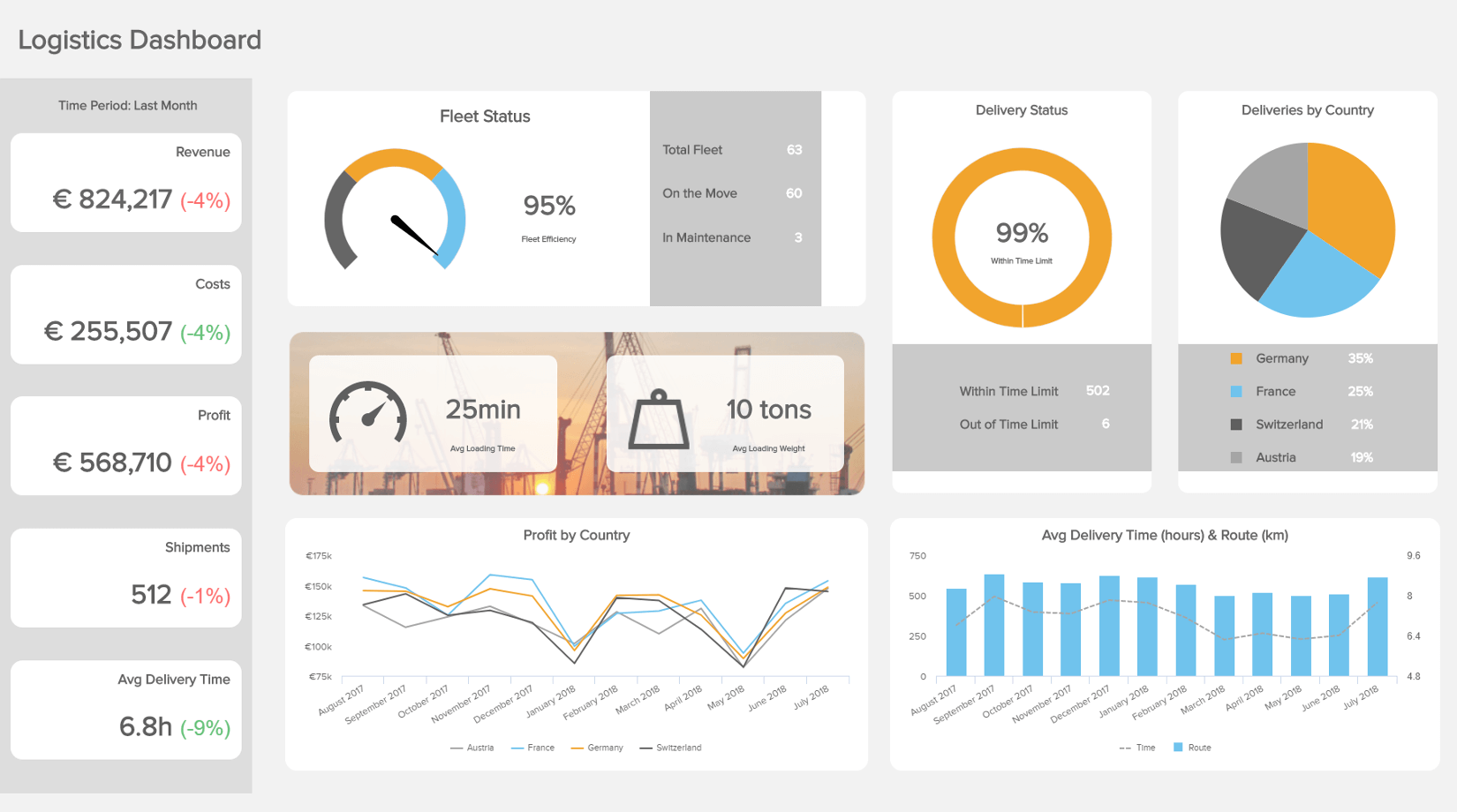WHAT IS LOGISTICS ANALYTICS?
Logistics analytics is a term used to describe analytical procedures conducted by organizations to analyze and coordinate the logistical function and supply chain to ensure smooth running of operations in a timely, and cost-effective manner. The logistics industry might be the very sector that could make the most out of big data and business intelligence, as long as it knows how to take the best advantage out of them. The hugeness of the flows handled every day with all the shipments, their weights, sizes, contact details or returns is generating an incredible amount of data that has to be managed. Is it conducted the right way? Is all the potential of these analytics still untapped? Very likely! This is why a solution like datapine’s logistics analytics software can help you in that game-changing trend to comprehend these large-scale data and turn them into a profitable competitive advantage.

"We were amazed how easy it was to use datapine and get the first KPIs within a couple of minutes. An average Excel user can configure and work with datapine with zero IT overhead."
Sebastian Diemer
ANALYZE AND ACT ON YOUR LOGISTICS DATA
Take advantage of innovative logistics analytics and turn your logistics data into actionable insights to improve your business performance.
- Conduct detailed cost benefit analysis to improve your profitability
- Simplify your supply chain while increasing operational capacity planning
- Optimize your on-time final deliveries to ensure customer satisfaction
- Make important business decisions based on real-time data
- Estimate future bottlenecks and peaks thanks to predictive analytics
Become a data wizard within less than 1 hour!
BENEFIT FROM LOGISTICS ANALYTICS SOFTWARE
Intelligent information on your shipping flows offers new cost optimization leverage. Decision-making comes to a whole new level with the possibility to manage the information flow in real-time or almost, and create interactive reports on the evolution of flows by using professional logistics dashboards.
Managing your logistics analytics properly will also lower the transportation errors and more generally, it will allow you to develop a large panel of criteria and logistics KPIs in order to assess the shipping experience (time frame, delivery success, returns, etc.). In a sector of increased competitiveness with very-demanding customers, controlling and understanding all your logistics data will make a big difference in your everyday business activities, and logistics analytics tools will enable you to take full control of your department or organization.

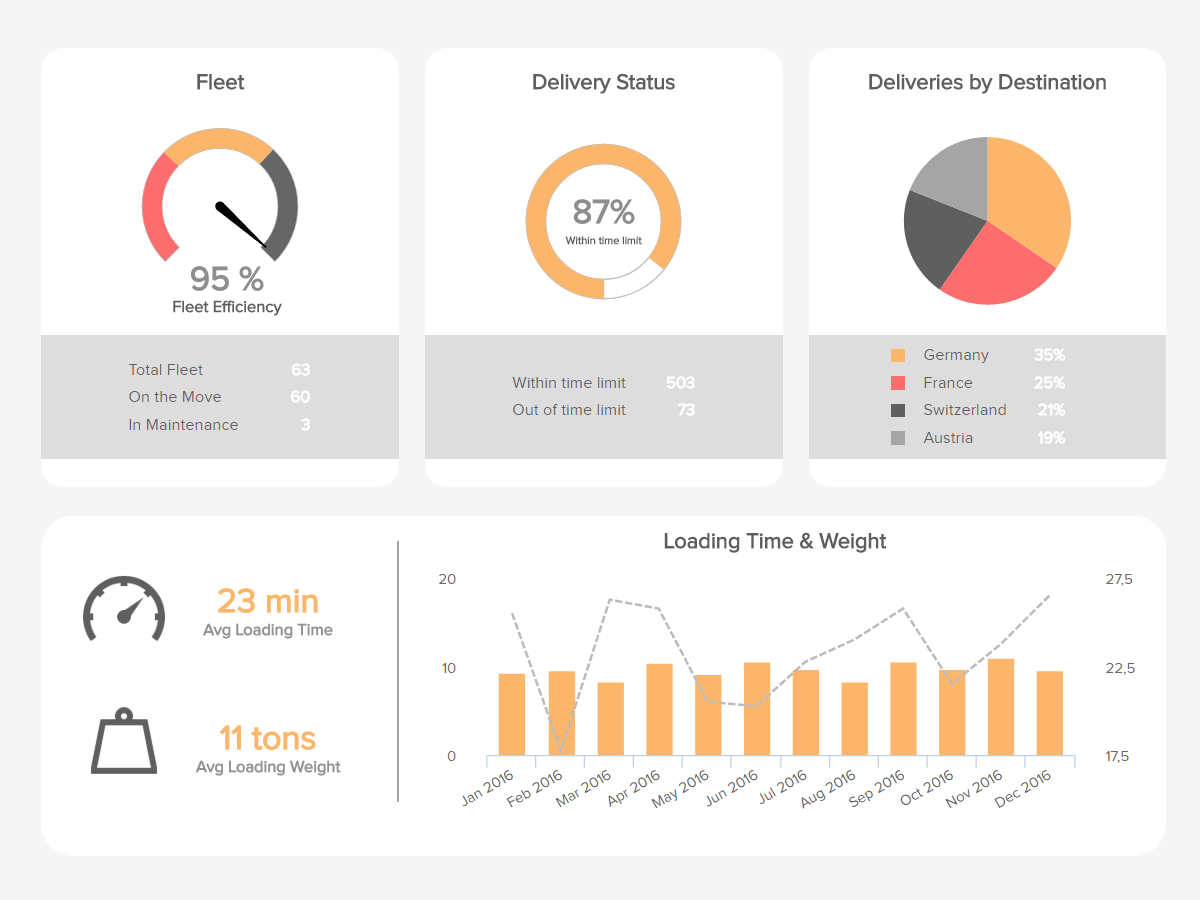

See these 5 examples of how big data in logistics can transform the supply chain.
Read Blog Article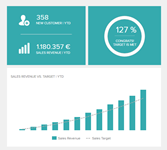
Mute the noise of your logistics data to focus on insightful and impactful KPIs.
View KPIs
Get an evaluation! Want to talk to us about how datapine can help your business?
Get in touchWHY IS LOGISTICS ANALYTICS SOFTWARE SO IMPORTANT?
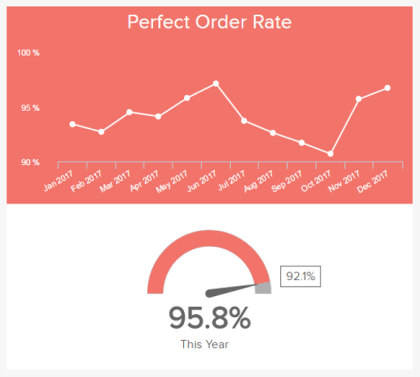
The logistics sector is a complex and dynamic one. The reliance on many moving parts, the potential bottlenecks at any point of the supply chain, the bonds and reliance on third-party companies are more reasons to use and benefit from the help of analytics. Optimizing routes, giving more transparency to the supply chain, streamlining factory functions: the advantages of logistics analytics software is plentiful, but they try to answer an always-increasing amount of challenges, brought by the disruption of this industry.
The globalization of everything, including the shippers, the change in customer behavior and in the organization of the supply chain, the competitive trade routes, low freight rates: all these are just a handful of the challenges that the logistics sector has to face every day. It is undergoing major transformation with a complexification of regulatory laws, emission concerns, or the rise of new technologies. Managing to leverage logistics analytics and optimize their business processes will help the supply chain and the logistics to create more value while keeping the costs of operation low, by making better-informed business decisions concerning their strategy. This sector is hence a good place to use logistics analytics software when looking for a competitive advantage.
WHAT IS THE ROLE OF ANALYTICS IN LOGISTICS?
Capitalizing on information is an important strategy for logistics services providers, in order to implement effective data-driven business models. By adopting business intelligence and analytics in logistics, your organization will yield value on different levels: by improving operational efficiency thanks to better resources utilization and allocation, and by increasing transparency as well as process performance. The customer experience will also be strengthened, resulting in a greater customer loyalty and thus retention. Finally, the implementation of more effective business models will lead to a better revenue generation. To benefit from these assets, it is important to exploit any untapped data you still have and strengthen operational efficiency. This can simply be done by using an effective logistics analytics software that will enable a sustainable supply chain development and success. Big data in logistics is revolutionizing the sector, and by taking advantage of the various applications and examples that can be used to optimize routes, quicken the last mile of shipping, empower transparency, automation of warehouses and the supply chain, the nature of logistics analytics can be streamlined faster than ever by generating insights with just a few clicks.
At datapine, we have understood the incredible competitive advantage that analytics in logistics carry and how you can monetize all this data collected. You can evaluate the number of shipments for a day, a week or a month, and find general patterns, allowing you to plan your budget and staffing schedule accordingly and better your productivity. You can also route paths to optimize their costs and time delivery. Whichever aspect of your supply chain, transportation or facility management you wish to improve, datapine has you covered and enables you to find actionable insights in your data sets thanks to our logistics business intelligence software.
HOW DO YOU IMPLEMENT MODERN LOGISTICS ANALYTICS?
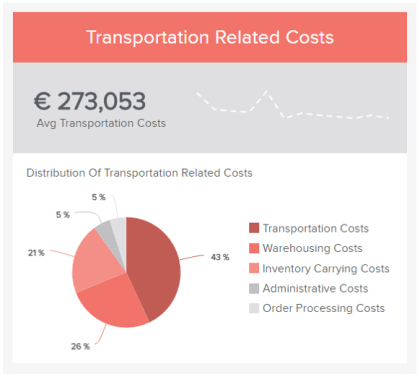
The purpose is to build a value-driven logistics network aligning supply and demand, with the right organizational practices and platforms. As for any new technology to adopt, embracing change is crucial to implement it the most frictionless possible across all the organization. Be aware that certain type of job and other responsibilities will be disrupted, and deep-seated work habits will have to adapt and adjust. There will be resistance to change to be expect, as it is a frequent reaction. Hence the high importance to implement a trusted network of communication, trainings for the new tools and habits, and eventually a change management unit, that will help transition to the new ways of working.
You can likewise implement a new logistics management strategy, in agreement with top-management and along the change program. Assess the various internal and external changes that will come with the use of a modern logistics analytics software, and adapt to them. Then, strive for continual logistics monitoring and clarity, and use your analytics to carry out an outstanding logistics management, identifying problems or bottlenecks in the end-to-end process before they affect the customer.
Become a data wizard in less than 1 hour!


